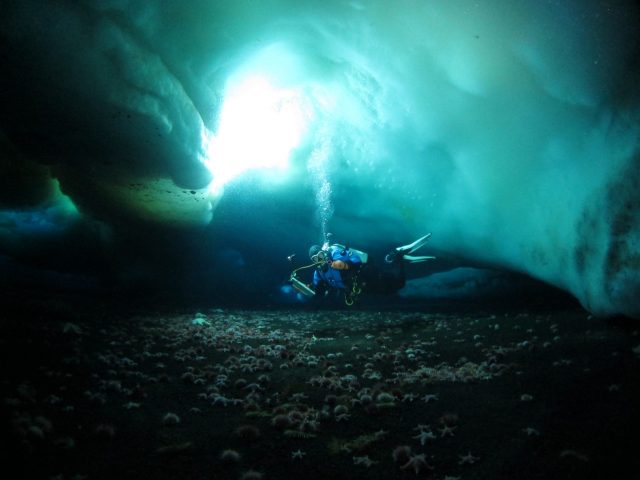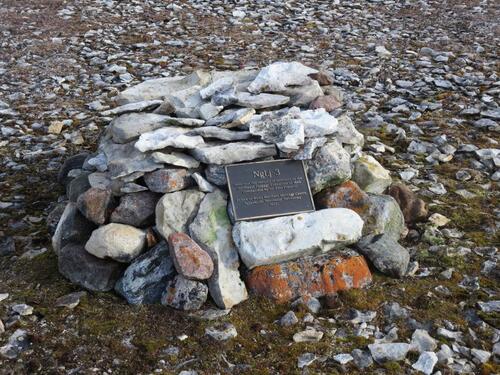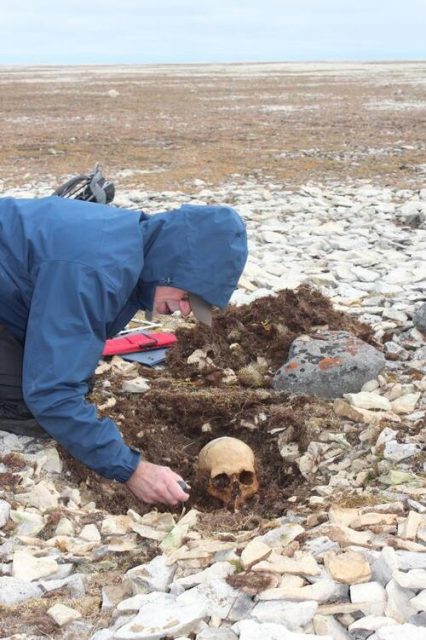This is the face of John Gregory, an officer and engineer who disappeared during the infamous Franklin Expedition of 1845. The situation inspired the AMC horror series The Terror’s first season.
It’s a breakthrough in the ongoing search for missing crew members. Gregory’s identity was revealed through analysis of his skeleton, discovered in 2013. He’s the first expedition member to be positively identified through DNA.
John Gregory was the warrant officer on the HMS Erebus
Warrant Officer Gregory lay in a grave on King William Island, part of Nunavut in northern Canada, some 45 miles south from where his ship, the HMS Erebus, became trapped in Arctic conditions. The same fate befell companion craft HMS Terror.

What led to this quite literally chilling scenario? The vessels had been heading for the Northwest Passage. Captain Sir John Franklin sought to map the area, but things went seriously wrong as the ice closed in.
The 129 men spent an agonizing three years stuck in the frozen wastes. As Mental Floss notes, the crews “likely resorted to cannibalism” during that period.
Eventually, 105 ventured onto the ice to find salvation. The latest find puts John Gregory among their number. Having made it as far as the island’s southwest shore — now known as Erebus Bay — he ended his days. Escape from the harrowing ordeal was impossible.

A chapter has now been closed in this infamous saga of seagoing misfortune. As mentioned in a press release via EurekAlert, research was undertaken by a Canadian team from the University of Waterloo, Lakehead University, and Trent University.
Their study is published in the journal Polar Record (Cambridge University Press). Additional funding for the work came from the Government of Nunavut.
Gregory’s body accompanied two others at Erebus Bay. They were finally found in 1859 and consigned to the earth 20 years later. For over a century, they rested in peace.
Risk of exposure in the 1990s led to a memorial cairn (or stone mound) being made for the remains. A plaque was also produced. Then, the 21st century came calling for this latest investigation. By 2014, Gregory’s teeth and bones were back in the ground.

It took much longer to track down HMS Erebus and HMS Terror. The shipwrecks didn’t come to light until 2014 and 2016, respectively.
Gregory’s descendants held the key to his identity
Information about the trip was recorded by Gregory himself, writing to his wife Hannah shortly before the nightmare began. But another source of information presented itself when the team of researchers issued a call for possible descendants to submit DNA samples.
Jonathan Gregory, aged 38, lives in South Africa. He supplied Professors Douglas Stenton, Anne Keenleyside, and company with a DNA sample. Following years of ambiguity, he wanted to confirm a blood connection with the long-deceased Warrant Officer.

The press release mentions “a direct, five-generation paternal relationship between the living descendant and John Gregory.” In other words, Mr. Gregory is his great-great-great-grandson.
Quoted by EurekAlert, the modern-day Gregory expressed relief, saying the project was “unlocking pieces of history that have been frozen in time for so long.”
A 3D reconstruction is available to view, bringing Warrant Officer Gregory back to life. The image is placed alongside his skull, enhancing the scientific yet scary feel behind the fascinating tale of danger at sea.
The tragedy also inspired a lot of great pop culture
AMC’s The Terror was released in 2018. Executive produced by Ridley Scott and Dan Simmons and based on Simmons’ 2007 novel, it presented a fearsome but fictitious portrait of the mission.
The tragedy interested key literary figures, such as Wilkie Collins who wrote a play called The Frozen Deep in 1856. Charles Dickens reportedly helped with the production. Then in 1866, Jules Verne’s character Captain Hatteras undertook the same ill-fated voyage.
More from us: Tom Hanks And Steven Spielberg Build Epic World War II Base In England For New Series ‘Masters Of The Air’
Folk singer Stan Rogers composed a ballad titled “Northwest Passage.” According to author Chris Gudgeon, who released The Canadian Encyclopedia in 2008, the composition is regarded as an unofficial national anthem.
While John Gregory makes headlines close to two centuries after his demise, there’s still a lot of work to do for bone detectives. Evidence of 26 people exists across nine locations.
DNA sampling will hopefully flesh out their stories too, enabling as many of the crew as possible to be laid to rest in the minds of their descendants.
